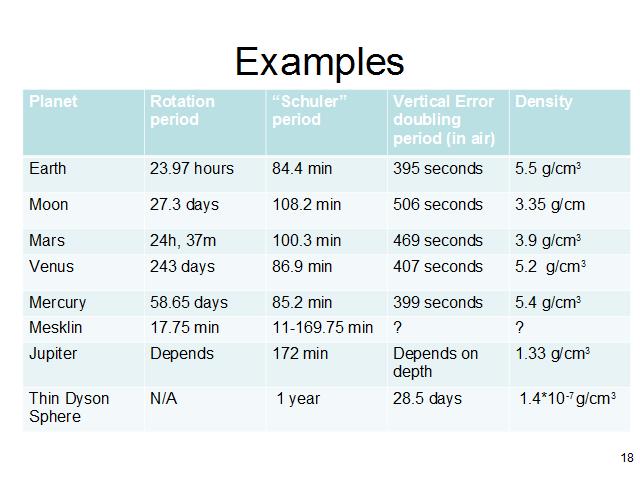
NOTES
Jupiter is an interesting case - the atmosphere rotates at a different rate at different latitudes and different depths. If you want to treat the Great Red Spot as a fixed point for your navigation, you need use the (sidereal) rotation rate of the Spot in your navigation solution, resulting in a "Earth rotation" type error at that rate - but that's not the only possible choice.
By a "thin" Dyson Sphere, I mean one for which the Sun much more massive than the material of the Sphere itself; a massive Sphere would have shorter "Schuler" periods and faster doubling in vertical (and I'm talking about living and navigating on the outside of the Sphere).
(For this chart I'm using the near-surface, in-atmosphere result for doubling period, just because it's simpler to do so).
For Mesklin, the Schuler period at some locations would be the same as the period of rotation, which would probably result in some resonance effects (I wasn't able to determine the density for Clement's Mesklin (the planet in Mission of Gravity))
One thing you'll notice is that doubling time and Schuler period seem like they are directly related to density; that's because they are...
